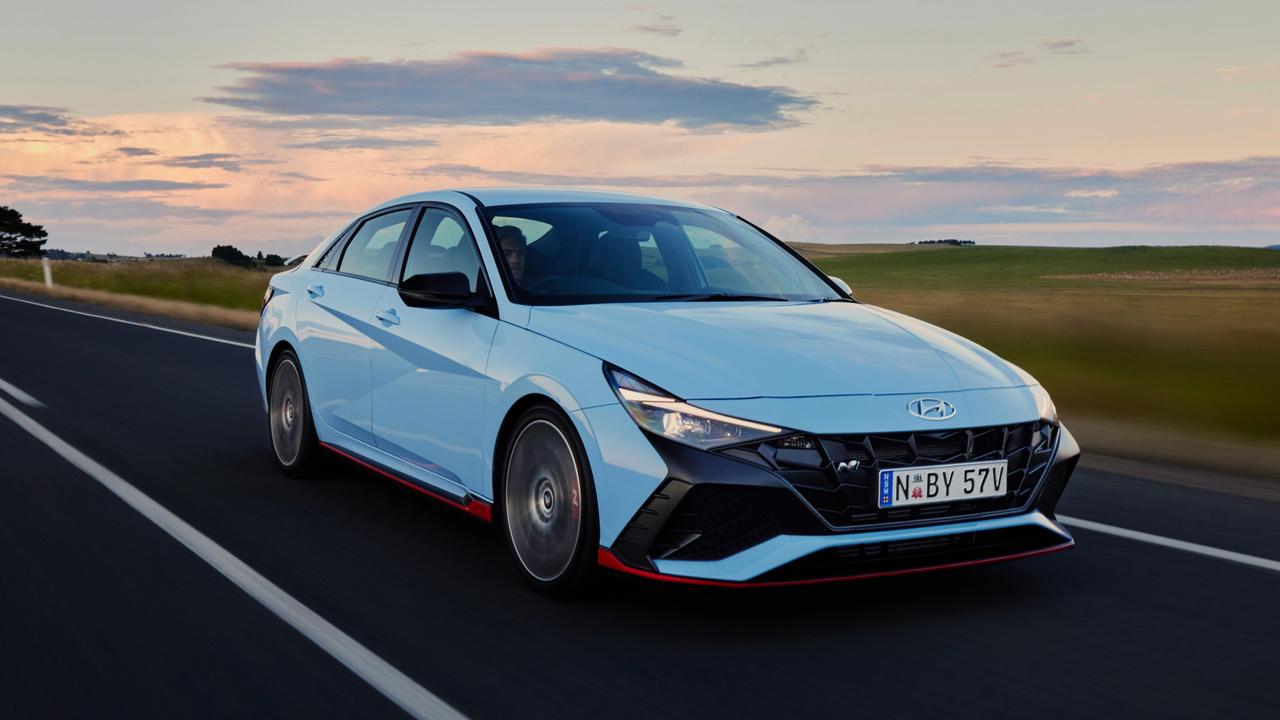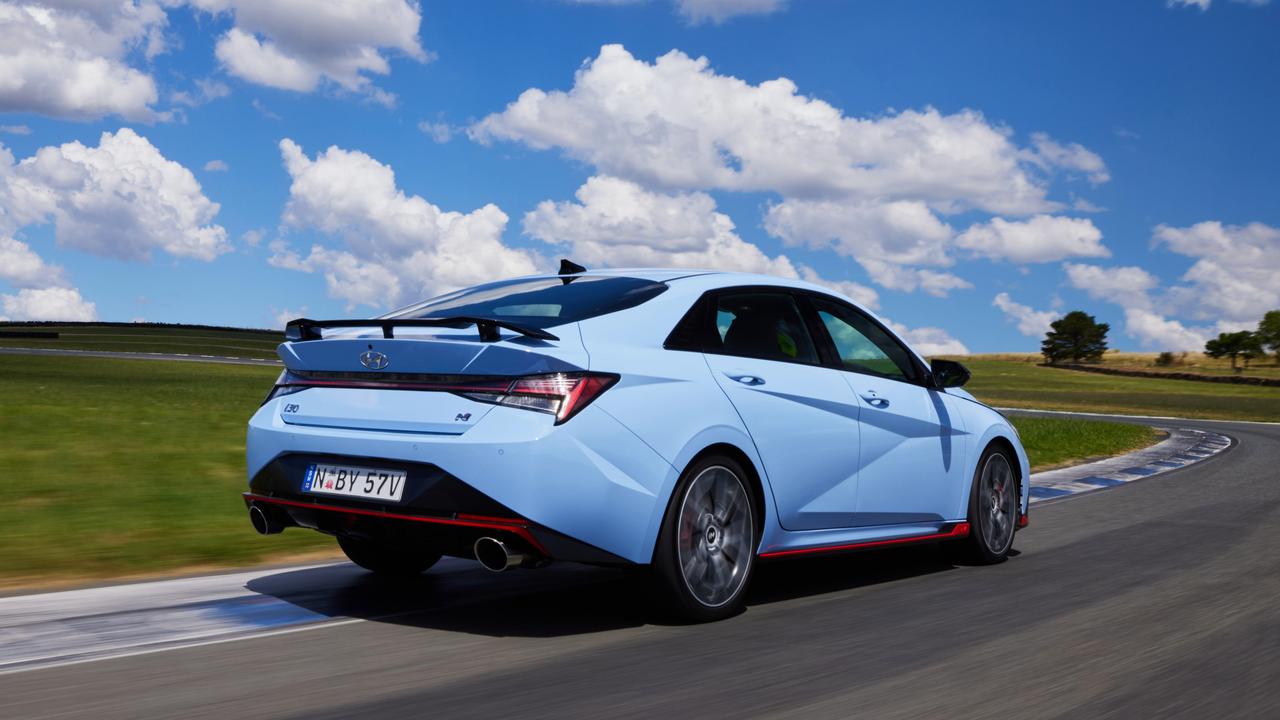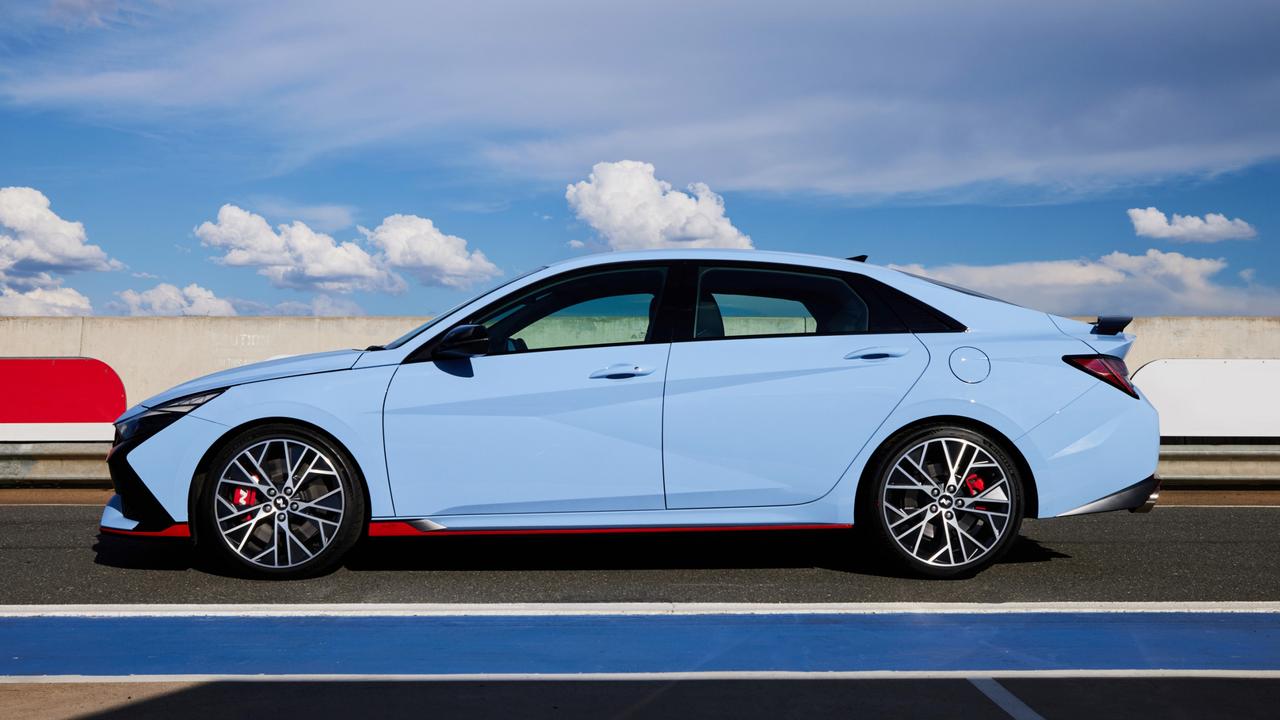2022 Hyundai i30 N sedan review
The South Korean brand has added another top-notch vehicle to its rapidly expanding performance car range.
New Cars
Don't miss out on the headlines from New Cars. Followed categories will be added to My News.
Hyundai is putting the boot into its N range of performance cars, releasing a sedan version of the award-winning i30 N hatch.
The sedan, the third new performance variant launched by the brand this year, represents more than a cosmetic tweak to the i30 N formula.
It is built on a different platform to the hatch, with edgier styling, a more up-market cabin and performance enhancements that elevate it to top dog status in the range.

At about $53,000 on the road for the automatic version, it’s roughly $3400 cheaper than the equivalent hatch, although it doesn’t have the hatch’s sunroof. An optional manual is available for about $300 less drive-away.
It’s quicker too. The auto completes the sprint to 100km/h in just 5.3 seconds, two-tenths quicker than the hatch.
The manual takes 5.8 seconds. The quicker time comes courtesy of fatter, grippier tyres, a more modern chassis and a redesigned, higher-flow airbox.
Hyundai Australia’s product planning and development manager, Tim Rodgers, says that despite its extreme looks, the sedan is “much more mature and refined” than the hatch.

“Going into this program we knew i30 sedan was going to be the quickest and most capable N we’ve ever had, with the new chassis platform and wider Michelin tyres,” he says.
The sedan also has more distance between the front and rear wheels, which translates to a more planted feel when changing direction.
On the road, it feels more composed and refined than the hatch, with a more forgiving ride and better noise suppression in the cabin.
That refinement takes away some of the boy-racer appeal of the i30 N, though.
While the exhaust still crackles and pops, it’s not as feral as the hatch under full throttle.

Hyundai says a new lighter and more rigid drive axle also delivers better comfort and cornering ability.
“All the qualities we tune into our other N models are really turned up in i30 N sedan – grip levels, response levels, bump absorption, mid-corner grip, mid corner response as well,” Rodgers says.
One area where there doesn’t seem to be a great deal of progress is tyre noise. The new Michelins create quite a roar on coarser road surfaces.
The cabin presentation is a big step up on the hatch, which has been criticised in the past for feeling a little plain for the price tag.

A 10.25 inch touchscreen pairs with a digital instrument display in front of the driver to create a hi-tech feel, while leather bucket seats and a sporty leather steering wheel deliver a more up-market feel.
The driver display changes colour when you choose Sport and “N” modes, while you can choose between traditional dials and a track-focused display that gives you more information about the car’s performance, including throttle and brake application, oil temperature and turbo boost.
That information can also be displayed on the centre screen and eventually weekend warriors will be able to dial up racetrack maps and set lap timers. At the moment, the only tracks available are Wakefield Park in Goulburn, NSW and Sydney Motorsport Park. A software update in the middle of next year will add more circuits.
There was little need to tinker with the engine and transmission combination on the i30 N. The 206kW/392Nm turbo four-cylinder musters ample thrust from low in the rev range, while the eight-speed dual-clutch auto delivers snappy changes when required, but shifts smoothly when pottering around at low speeds. Steering-wheel mounted paddles allow for manual gear shifts.
A red button on the steering wheel, called N Grin Shift, unleashes maximum power and torque for 20 seconds, while N Power Shift gives you a shove in the back when you upshift.
The six-speed manual shifter feels light and precise and Hyundai has revised final drive ratios to improve acceleration.
Drivers can select one of five driving modes: Eco, Normal, Sport, N and N Custom. Each has different settings for the throttle response, suspension stiffness, steering feel, gear shift timing, stability control and exhaust sound. In a nice touch, you can mix and match these settings in Custom mode.
VERDICT 4/5
An impressive addition to Hyundai’s performance car stable, delivering hot-hatch thrills in a more mature, refined package
HYUNDAI i30 N SEDAN VITALS
Price: About $53,400 drive-away
Engine: 2.0-litre turbocharged petrol four-cylinder, 206kW/392Nm
Warranty/servicing: Five-year/unlimited km, $1675 over five years
Safety: Six airbags, auto emergency braking, lane-keep assist, blind-spot warning, driver attention warning, rear cross-traffic alert
Fuel use: 8.2L/100km
Spare: Space saver
Cargo: 464 litres
Originally published as 2022 Hyundai i30 N sedan review









